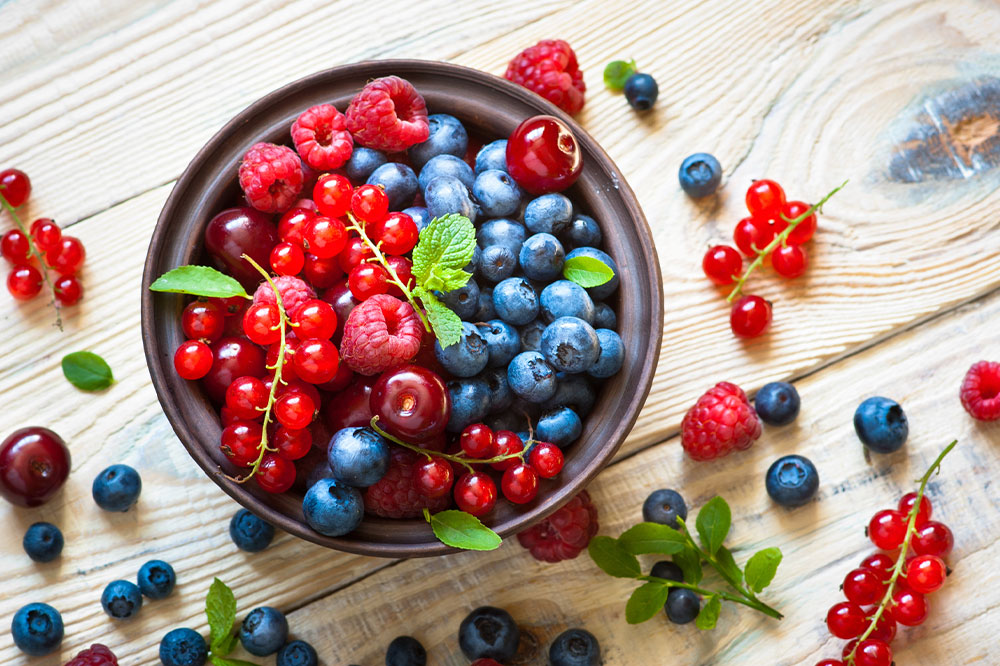20 superfoods that help lower blood sugar levels

High blood sugar levels can result from various factors, including excessive consumption of sugary foods, stress, and a lack of physical activity. Besides increasing the risk of type-2 diabetes, elevated blood sugar can lead to complications such as heart disease and kidney damage. Hence, maintaining optimal blood sugar levels is crucial. A practical approach to achieving that involves managing food choices. Certain superfoods, such as the following, can effectively help one lower their elevated blood sugar levels.
1. Broccoli
Broccoli contains a compound called sulforaphane, a type of isothiocyanate that can naturally lower blood sugar levels. It exhibits antidiabetic effects and can reduce oxidative stress markers. One can also include broccoli sprouts in their food regimen, as they are rich in a compound called glucosinolates. This compound also contributes to reducing blood sugar levels by improving insulin sensitivity.
2. Fatty fish
An effective way to lower blood sugar levels is by increasing the consumption of proteins, as they promote satiety, slow digestion, and stabilize blood sugar levels after meals. Additionally, omega-3 fatty acids are found to improve insulin sensitivity. These nutrients and various vitamins, minerals, and antioxidants are found in fatty fish. Hence, including fatty fish in the food regimen can help lower blood sugar levels.
3. Okra
Okra is a vegetable that is rich in fiber and compounds such as polysaccharides and flavonoid antioxidants. While these compounds are known for naturally reducing blood sugar levels, fibers aid in blood sugar regulation by slowing down glucose absorption.
4. Pumpkin and pumpkin seeds
Like okra, pumpkins and pumpkin seeds also contain polysaccharides, which can effectively aid in lowering elevated blood sugar levels. Additionally, pumpkin seeds also contain healthy fats and proteins, which also promote regulation of blood sugar levels.
5. Flaxseeds
Flaxseeds, abundant in fiber, aid in blood sugar level management by slowing down sugar absorption. They are also rich in polyunsaturated fats, a type of healthy fat that significantly contributes to managing blood sugar levels.
6. Garlic
Research has found that garlic exhibits properties that positively influence blood sugar levels by increasing insulin sensitivity and promoting its secretion. Its distinctive composition adds flavor and contributes to health benefits, making it an appealing choice for those who aim to lower their elevated blood sugar levels.
7. Citrus fruits
Citrus fruits, such as oranges, lemons, tangerines, etc., offer a refreshing and nutritious choice for maintaining blood sugar balance. These fruits have natural sugars with a low to medium glycemic index. Additionally, they contain high amounts of fiber and a compound called naringenin, which exhibits antidiabetic properties.
8. Oats
Oats are renowned for their soluble fiber content, which is ideal for managing blood sugar levels. They are also known to contain beta-glucan, which helps improve insulin sensitivity and manage blood sugar levels.
9. Eggs
Eggs are a rich source of protein, healthy fats, and antioxidants. Their well-rounded profile supports overall health and aids in managing blood sugar levels by promoting satiety and providing essential nutrients.
10. Avocados
Avocados are rich in fiber and monounsaturated fats, making them a delicious addition to a diabetes-friendly food regimen. This is because this combination of nutrients effectively manages blood sugar levels.
11. Yogurt
According to studies, yogurt has also been found to help lower elevated blood sugar levels. It is a rich source of protein and probiotics, which also aid. Additionally, its probiotics support gut health, which improves metabolism. However, one must ensure that they choose unsweetened yogurt for the best results.
12. Legumes
Studies have also found that yogurt can help lower elevated blood sugar levels. It is a rich source of protein and probiotics, which also aid in this. Additionally, its probiotics support gut health, which improves metabolism. However, one must ensure that they choose unsweetened yogurt for the best results.
13. Nuts
Nuts, such as almonds, walnuts, and pistachios, contain high amounts of fiber, healthy fats, and omega-3 fatty acids, all of which aid in blood sugar management goals. Nuts are also great plant-based sources of protein, which promotes satiety and helps manage blood sugar levels.
14. Berries
Berries are packed with antioxidants and fiber. This makes them a flavorful option to enhance insulin sensitivity, which further helps in lowering elevated blood sugar levels. Plus, their natural sweetness and low glycemic index make them a smart choice for those monitoring blood sugar levels while enjoying a delicious snack.
15. Chia seeds
Chia seeds are also rich in fiber and healthy fats, which makes them a simple yet effective option for managing blood sugar levels.
16. Whole grain bread
With its high fiber content and low glycemic index, whole-grain bread is a good option for regulating blood sugar. Choosing whole-grain bread over refined-grain bread helps avoid rapid spikes in blood sugar levels.
17. Apples
Apples contain three effective compounds: quercetin, chlorogenic acid, and gallic acid, which may contribute to reducing blood sugar levels and protecting against diabetes. Hence, one can add apples to their food routine, as they are a nutritious and satisfying snack.
18. Leafy greens
Leafy greens like spinach and kale are packed with fiber, flavonoids, and antioxidants. All of these nutrients are effective in supporting blood sugar levels. Plus, the versatility of leafy greens makes them an easy addition to various meals.
19. Cinnamon
Cinnamon is a popular spice that is known for its ability to imitate insulin and increase insulin sensitivity. With this property, cinnamon serves as a flavorful addition to a food regimen that is designed to manage blood sugar levels. Additionally, its antioxidant content further adds to its qualities.
20. Ginger
Supported by studies, ginger showcases potential benefits for blood sugar management. Its distinct flavor and versatility make it a great addition to a diabetes-friendly food regimen, providing culinary appeal and potential health advantages.


